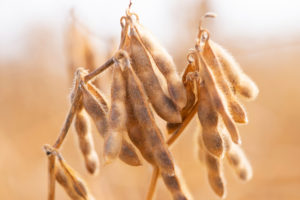Research that high-oleic soybeans can add value to the dairy farm is driving interest in Wisconsin, according to Pioneer.
High-oleic soybeans have been around for more than a decade. They were designed for a healthier fry oil. But Wisconsin dairies have an opportunity to use these beans for a healthier bottom line.
Adam Krull joins us from Pioneer’s global nutrition team. He says in the past few years, they’ve noticed more interest in Plenish soybeans in Wisconsin. Plenish is Pioneer’s brand of high-oleic soybeans.
“It wasn’t until 2018, 2019, when some of these dairy nutritionists… did some research feeding these high-oleic soybeans to dairy cattle and saw a nice response as far as increasing milk fat,” he says. “We’ve taken it from there, and it’s opened a new market for us. It does have some cool, positive effects when being fed to cattle.”
Because Wisconsin is fairly new to the high-oleic bean market, logistics may be a hurdle to some growers. Krull explains that one way a dairy can incorporate Plenish beans into the feed ration is from their own field. In that case, farmers need to roast the soybeans, which requires a capital expense. The other option is to incorporate high-oleic beans through a byproduct through a soybean crush plant that does not do the hexane extraction of the oil. This infrastructure is minimal in Wisconsin, Krull says.
Regardless of logistical hurdles, the high-oleic soybean acres are growing in Wisconsin. In 2023, Wisconsin farmers planted roughly 2,000 acres of Plenish beans. Pioneer estimates 10,000 acres will have Plenish in Wisconsin in 2024.
“We are having a lot of conversations in Wisconsin right now… where there’s a lot of Plenish soybeans going in the ground next year that there’s going to be a significant number of dairy farms going to be feeding Plenish next year,” Krull says.


